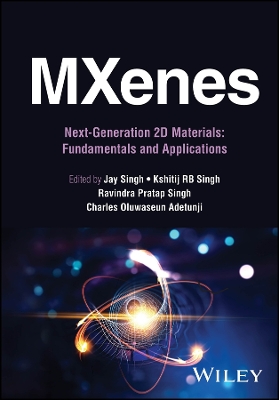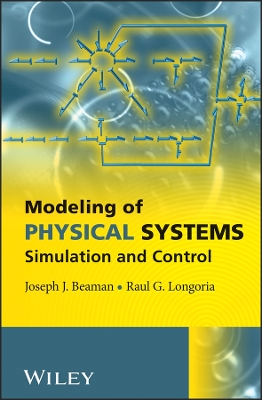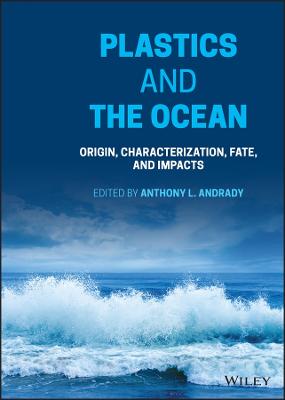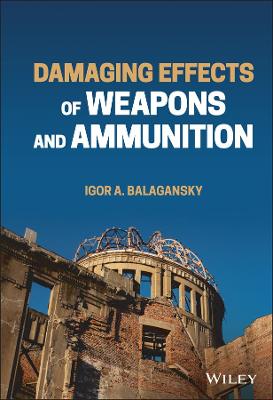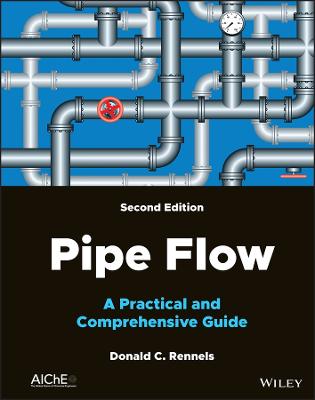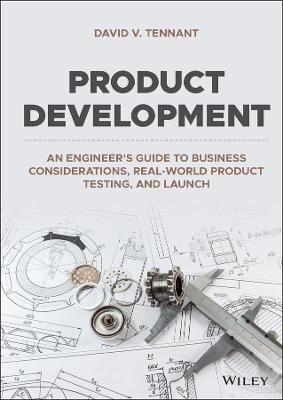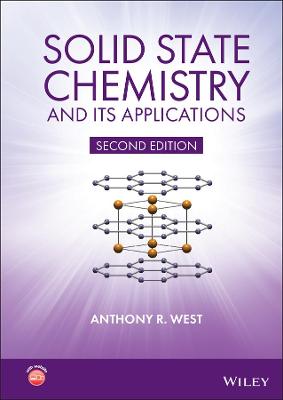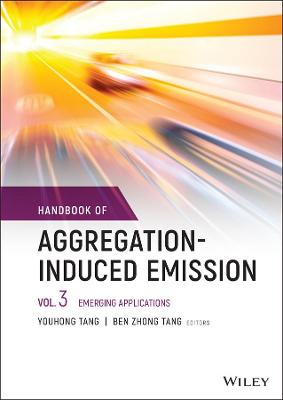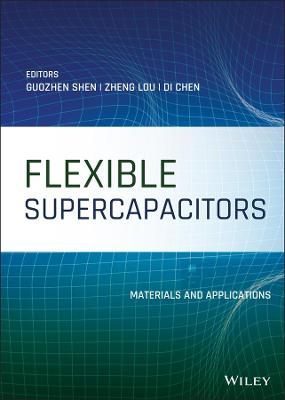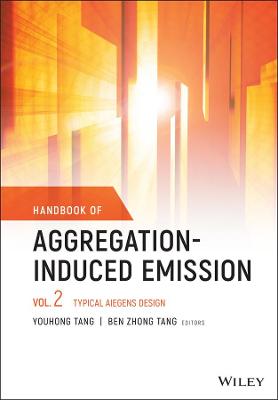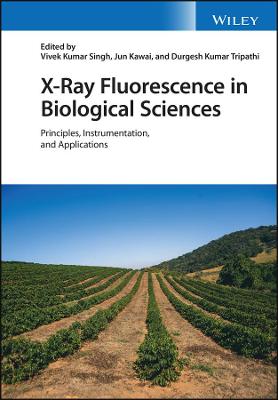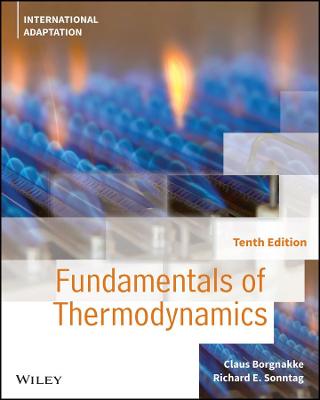Flow-Induced Vibration Handbook for Nuclear and Process Equipment
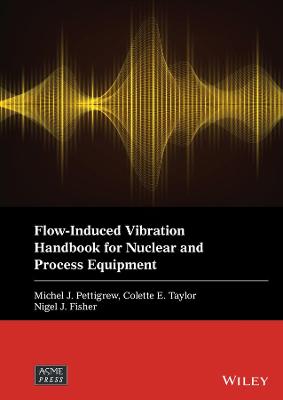 -15%
portes grátis
-15%
portes grátis
Flow-Induced Vibration Handbook for Nuclear and Process Equipment
Pettigrew, Michel J.; Taylor, Colette E.; Fisher, Nigel J.
John Wiley & Sons Inc
12/2021
496
Dura
Inglês
9781119810964
15 a 20 dias
1072
Acknowledgments xvii
Contributors xix
1 Introduction and Typical Vibration Problems 1
Michel J. Pettigrew
1.1 Introduction 1
1.2 Some Typical Component Failures 2
1.3 Dynamics of Process System Components 9
1.3.1 Multi-Span Heat Exchanger Tubes 9
1.3.2 Other Nuclear and Process Components 10
Notes 10
References 10
2 Flow-Induced Vibration of Nuclear and Process Equipment: An Overview 13
Michel J. Pettigrew and Colette E. Taylor
2.1 Introduction 13
2.1.1 Flow-Induced Vibration Overview 13
2.1.2 Scope of a Vibration Analysis 14
2.2 Flow Calculations 14
2.2.1 Flow Parameter Definition 14
2.2.2 Simple Flow Path Approach 15
2.2.3 Comprehensive 3-D Approach 16
2.2.4 Two-Phase Flow Regime 18
2.3 Dynamic Parameters 18
2.3.1 Hydrodynamic Mass 18
2.3.2 Damping 19
2.4 Vibration Excitation Mechanisms 25
2.4.1 Fluidelastic Instability 25
2.4.2 Random Turbulence Excitation 27
2.4.3 Periodic Wake Shedding 31
2.4.4 Acoustic Resonance 34
2.4.5 Susceptibility to Resonance 35
2.5 Vibration Response Prediction 36
2.5.1 Fluidelastic Instability 37
2.5.2 Random Turbulence Excitation 38
2.5.3 Periodic Wake Shedding 38
2.5.4 Acoustic Resonance 38
2.5.5 Example of Vibration Analysis 38
2.6 Fretting-Wear Damage Considerations 40
2.6.1 Fretting-Wear Assessment 40
2.6.2 Fretting-Wear Coefficients 41
2.6.3 Wear Depth Calculations 42
2.7 Acceptance Criteria 42
2.7.1 Fluidelastic Instability 42
2.7.2 Random Turbulence Excitation 43
2.7.3 Periodic Wake Shedding 43
2.7.4 Tube-to-Support Clearance 43
2.7.5 Acoustic Resonance 43
2.7.6 Two-Phase Flow Regimes 43
Note 43
References 44
3 Flow Considerations 47
John M. Pietralik, Liberat N. Carlucci, Colette E. Taylor, and Michel J. Pettigrew
3.1 Definition of the Problem 47
3.2 Nature of the Flow 48
3.2.1 Introduction 48
3.2.2 Flow Parameter Definitions 50
3.2.3 Vertical Bubbly Flow 54
3.2.4 Flow Around Bluff Bodies 55
3.2.5 Shell-Side Flow in Tube Bundles 56
3.2.6 Air-Water versus Steam-Water Flows 63
3.2.7 Effect of Nucleate Boiling Noise 63
3.2.8 Summary 67
3.3 Simplified Flow Calculation 67
3.4 Multi-Dimensional Thermalhydraulic Analysis 74
3.4.1 Steam Generator 74
3.4.2 Other Heat Exchangers 78
Acronyms 81
Nomenclature 81
Subscripts 82
Notes 83
References 83
4 Hydrodynamic Mass, Natural Frequencies and Mode Shapes 87
Daniel J. Gorman, Colette E. Taylor, and Michel J. Pettigrew
4.1 Introduction 87
4.2 Total Tube Mass 88
4.2.1 Single-Phase Flow 89
4.2.2 Two-Phase Flow 90
4.3 Free Vibration Analysis of Straight Tubes 93
4.3.1 Free Vibration Analysis of a Single-Span Tube 94
4.3.2 Free Vibration Analysis of a Two-Span Tube 97
4.3.3 Free Vibration Analysis of a Multi-Span Tube 99
4.4 Basic Theory for Curved Tubes 100
4.4.1 Theory of Curved Tube In-Plane Free Vibration 102
4.4.2 Theory of Curved Tube Out-of-Plane Free Vibration 104
4.5 Free Vibration Analysis of U-Tubes 105
4.5.1 Setting Boundary Conditions for the In-Plane Free Vibration Analysis of U-Tubes Possessing Geometric Symmetry 106
4.5.2 Development of the In-Plane Eigenvalue Matrix for a Symmetric U-Tube 109
4.5.3 Generation of Eigenvalue Matrices for Out-of-Plane Free Vibration Analysis of U-Tubes Possessing Geometric Symmetry 109
4.5.4 Free Vibration Analysis of U-Tubes Which Do Not Possess Geometric Similarity 112
4.6 Concluding Remarks 114
Nomenclature 115
References 116
5 Damping of Cylindrical Structures in Single-Phase Fluids 119
Michel J. Pettigrew
5.1 Introduction 119
5.2 Energy Dissipation Mechanisms 119
5.3 Approach 123
5.4 Damping in Gases 124
5.4.1 Effect of Number of Supports 127
5.4.2 Effect of Frequency 128
5.4.3 Vibration Amplitude 128
5.4.4 Effect of Diameter or Mass 128
5.4.5 Effect of Side Loads 128
5.4.6 Effect of Higher Modes 129
5.4.7 Effect of Support Thickness 129
5.4.8 Effect of Clearance 132
5.5 Design Recommendations for Damping in Gases 132
5.6 Damping in Liquids 133
5.6.1 Tube-to-Fluid Viscous Damping 133
5.6.2 Damping at the Supports 136
5.6.3 Squeeze-Film Damping 138
5.6.4 Damping due to Sliding 141
5.6.5 Semi-Empirical Formulation of Tube-Support Damping 143
5.7 Discussion 147
5.8 Design Recommendations for Damping in Liquids 148
5.8.1 Simple Criterion Based on Available Data 148
5.8.2 Criterion Based on the Formulation of Energy Dissipation Mechanisms 148
Nomenclature 149
Subscripts 150
References 151
6 Damping of Cylindrical Structures in Two-Phase Flow 155
Michel J. Pettigrew and Colette E. Taylor
6.1 Introduction 155
6.2 Sources of Information 155
6.3 Approach 157
6.4 Two-Phase Flow Conditions 158
6.4.1 Definition of Two-Phase Flow Parameters 158
6.4.2 Flow Regime 161
6.5 Parametric Dependence Study 162
6.5.1 Effect of Flow Velocity 163
6.5.2 Effect of Void Fraction 163
6.5.3 Effect of Confinement 168
6.5.4 Effect of Tube Mass 168
6.5.5 Effect of Tube Vibration Frequency 168
6.5.6 Effect of Tube Bundle Configuration 169
6.5.7 Effect of Motion of Surrounding Tubes 169
6.5.8 Effect of Flow Regime 170
6.5.9 Effect of Fluid Properties 171
6.6 Development of Design Guidelines 172
6.7 Discussion 177
6.7.1 Damping Formulation 177
6.7.2 Two-Phase Damping Mechanisms 177
6.8 Summary Remarks 178
Nomenclature 178
Subscripts 179
Note 179
References 180
7 Fluidelastic Instability of Tube Bundles in Single-Phase Flow 183
Michel J. Pettigrew and Colette E. Taylor
7.1 Introduction 183
7.2 Nature of Fluidelastic Instability 183
7.3 Fluidelastic Instability: Analytical Modelling 185
7.4 Fluidelastic Instability: Semi-Empirical Models 186
7.5 Approach 191
7.6 Important Definitions 191
7.6.1 Tube Bundle Configurations 191
7.6.2 Flow Velocity Definition 191
7.6.3 Critical Velocity for Fluidelastic Instability 196
7.6.4 Damping 197
7.6.5 Tube Frequency 198
7.7 Parametric Dependence Study 198
7.7.1 Flexible versus Rigid Tube Bundles 198
7.7.2 Damping 201
7.7.3 Pitch-to-Diameter Ratio, P/D 201
7.7.4 Fluidelastic Instability Formulation 204
7.8 Development of Design Guidelines 206
7.9 In-Plane Fluidelastic Instability 209
7.10 Axial Flow Fluidelastic Instability 212
7.11 Concluding Remarks 213
Nomenclature 214
Subscript 214
References 215
8 Fluidelastic Instability of Tube Bundles in Two-Phase Flow 219
Michel J. Pettigrew and Colette E. Taylor
8.1 Introduction 219
8.2 Previous Research 219
8.2.1 Flow-Induced Vibration in Two-Phase Axial Flow 220
8.2.2 Flow-Induced Vibration in Two-Phase Cross Flow 221
8.2.3 Damping Studies 221
8.3 Fluidelastic Instability Mechanisms in Two-Phase Cross Flow 221
8.4 Fluidelastic Instability Experiments in Air-Water Cross Flow 224
8.4.1 Initial Experiments in Air-Water Cross Flow 224
8.4.2 Behavior in Intermittent Flow 227
8.4.3 Effect of Bundle Geometry 229
8.4.4 Flexible versus Rigid Tube Bundle Behavior 230
8.4.5 Hydrodynamic Coupling 232
8.5 Analysis of the Fluidelastic Instability Results 234
8.5.1 Defining Critical Mass Flux and Instability Constant 234
8.5.2 Comparison with Results of Other Researchers 235
8.5.3 Summary of Air-Water Tests 238
8.6 Tube Bundle Vibration in Two-Phase Freon Cross Flow 239
8.6.1 Introductory Remarks 239
8.6.2 Background Information 240
8.6.3 Experiments in Freon Cross Flow 240
8.7 Freon Test Results and Discussion 244
8.7.1 Results and Analysis 244
8.7.2 Proposed Explanations 247
8.7.3 Concluding Remarks 247
8.7.4 Summary Findings 249
8.8 Fluidelastic Instability of U-Tubes in Air-Water Cross Flow 250
8.8.1 Experimental Considerations 250
8.8.2 U-Tube Dynamics 251
8.8.3 Vibration Response 251
8.8.4 Out-of-Plane Vibration 251
8.8.5 In-Plane Vibration 254
8.9 In-Plane (In-Flow) Fluidelastic Instability 255
8.9.1 In-Flow Experiments in a Wind Tunnel 255
8.9.2 In-Flow Experiments in Two-Phase Cross Flow 255
8.9.3 Single-Tube Fluidelastic Instability Results 256
8.9.4 Single Flexible Column and Central Cluster Fluidelastic Instability Results 258
8.9.5 Two Partially Flexible Columns 258
8.9.6 In-Flow Fluidelastic Instability Results and Discussion 261
8.10 Design Recommendations 261
8.10.1 Design Guidelines 261
8.10.2 Fluidelastic Instability with Intermittent Flow 263
8.11 Fluidelastic Instability in Two-Phase Axial Flow 264
8.12 Concluding Remarks 265
Nomenclature 265
Subscripts 266
Note 266
References 266
9 Random Turbulence Excitation in Single-Phase Flow 271
Colette E. Taylor and Michel J. Pettigrew
9.1 Introduction 271
9.2 Theoretical Background 271
9.2.1 Equation of Motion 272
9.2.2 Derivation of the Mean-Square Response 273
9.2.3 Simplification of Tube Vibration Response 274
9.2.4 Integration of the Transfer Function 275
9.2.5 Use of the Simplified Expression in Developing Design Guidelines 275
9.3 Literature Search 277
9.4 Approach Taken 277
9.5 Discussion of Parameters 279
9.5.1 Directional Dependence (Lift versus Drag) 279
9.5.2 Bundle Orientation 279
9.5.3 Pitch-to-Diameter Ratio (P/D) 279
9.5.4 Upstream Turbulence 280
9.5.5 Fluid Density (Gas versus Liquid) 283
9.5.6 Summary 283
9.6 Design Guidelines 284
9.7 Random Turbulence Excitation in Axial Flow 287
Nomenclature 287
References 288
10 Random Turbulence Excitation Forces Due to Two-Phase Flow 291
Colette E. Taylor and Michel J. Pettigrew
10.1 Introduction 291
10.2 Background 291
10.3 Approach Taken to Data Reduction 295
10.4 Scaling Factor for Frequency 296
10.4.1 Definition of a Velocity Scale 297
10.4.2 Definition of a Length Scale 298
10.4.3 Dimensionless Reduced Frequency 301
10.4.4 Effect of Frequency 301
10.5 Scaling Factor for Power Spectral Density 302
10.5.1 Effect of Flow Regime 302
10.5.2 Effect of Void Fraction 304
10.5.3 Effect of Mass Flux 306
10.5.4 Effect of Tube Diameter 306
10.5.5 Effect of Correlation Length 306
10.5.6 Effect of Bundle and Tube-Support Geometry 307
10.5.7 Effect of Two-Phase Mixture 308
10.5.8 Effect of Nucleate Boiling 310
10.6 Dimensionless Power Spectral Density 311
10.7 Upper Bounds for Two-Phase Cross Flow Dimensionless Spectra 314
10.7.1 Bubbly Flow 314
10.7.2 Churn Flow 315
10.7.3 Intermittent Flow 316
10.8 Axial Flow Random Turbulence Excitation 318
10.9 Conclusions 323
Nomenclature 324
References 325
11 Periodic Wake Shedding and Acoustic Resonance 329
David S. Weaver, Colette E. Taylor, and Michel J. Pettigrew
11.1 Introduction 329
11.2 Periodic Wake Shedding 332
11.2.1 Frequency: Strouhal Number 332
11.2.2 Calculating Tube Resonance Amplitudes 335
11.2.3 Fluctuating Force Coefficients in Single-Phase Flow 336
11.2.4 Fluctuating Force Coefficients in Two-Phase Flow 338
11.2.5 The Effect of Bundle Orientation and P/D on Fluctuating Force Coefficients 346
11.2.6 The Effect of Void Fraction and Flow Regime on Fluctuating Force Coefficients 347
11.3 Acoustic Resonance 354
11.3.1 Acoustic Natural Frequencies 354
11.3.2 Equivalent Speed of Sound 355
11.3.3 Acoustic Natural Frequencies (fa)n 356
11.3.4 Frequency Coincidence - Critical Velocities 356
11.3.5 Damping Criteria 358
11.3.6 Sound Pressure Level 361
11.3.7 Elimination of Acoustic Resonance 364
11.4 Conclusions and Recommendations 366
Nomenclature 367
References 369
12 Assessment of Fretting-Wear Damage in Nuclear and Process Equipment 373
Michel J. Pettigrew, Metin Yetisir, Nigel J. Fisher, Bruce A.W. Smith, and Victor P. Janzen
12.1 Introduction 373
12.2 Dynamic Characteristics of Nuclear Structures and Process Equipment 374
12.2.1 Heat Exchangers 374
12.2.2 Nuclear Structures 375
12.3 Fretting-Wear Damage Prediction 376
12.3.1 Time-Domain Approach 376
12.3.2 Energy Approach 380
12.4 Work-Rate Relationships 380
12.4.1 Shear Work Rate and Mechanical Power 380
12.4.2 Vibration Energy Relationship 381
12.4.3 Single Degree-of-Freedom System 381
12.4.4 Multi-Span Beams Under Harmonic Excitation 382
12.4.5 Response to Random Excitation 382
12.4.6 Work-Rate Estimate: Summary 384
12.5 Experimental Verification 384
12.6 Comparison to Time Domain Approach 385
12.7 Practical Applications: Examples 386
12.8 Concluding Remarks 392
Nomenclature 392
Note 393
References 394
13 Fretting-Wear Damage Coefficients 397
Nigel J. Fisher and Fabrice M. Guerout
13.1 Introduction 397
13.2 Fretting-Wear Damage Mechanisms 397
13.2.1 Impact Fretting Wear 397
13.2.2 Trends 398
13.2.3 Work-Rate Model 402
13.3 Experimental Considerations 404
13.3.1 Experimental Studies 404
13.3.2 Room-Temperature Test Data 404
13.3.3 High-Temperature Experimental Facility 407
13.3.4 Wear Volume Measurements 409
13.4 Fretting Wear of Zirconium Alloys 409
13.4.1 Introduction 409
13.4.2 Experimental Set-Up 410
13.4.3 Effect of Vibration Amplitude and Motion Type 412
13.4.4 Effect of Pressure-Tube Pre-Oxidation and Surface Preparation 412
13.4.5 Effect of Temperature 412
13.4.6 Effect of pH Control Additive and Dissolved Oxygen Content 413
13.4.7 Discussions 414
13.5 Fretting Wear of Heat Exchanger Materials 417
13.5.1 Work-Rate Model and Wear Coefficient 417
13.5.2 Effect of Test Duration 419
13.5.3 Effect of Temperature 422
13.5.4 Effect of Water Chemistry 424
13.5.5 Effect of Tube-Support Geometry and Tube Materials 426
13.5.6 Discussion 427
13.6 Summary and Recommendations 429
Nomenclature 429
Notes 429
References 430
Component Analysis 433
Introduction 433
Analysis of a Process Heat Exchanger 435
Analysis of a Nuclear Steam Generator U-Bend 445
Subject Index 463
Acknowledgments xvii
Contributors xix
1 Introduction and Typical Vibration Problems 1
Michel J. Pettigrew
1.1 Introduction 1
1.2 Some Typical Component Failures 2
1.3 Dynamics of Process System Components 9
1.3.1 Multi-Span Heat Exchanger Tubes 9
1.3.2 Other Nuclear and Process Components 10
Notes 10
References 10
2 Flow-Induced Vibration of Nuclear and Process Equipment: An Overview 13
Michel J. Pettigrew and Colette E. Taylor
2.1 Introduction 13
2.1.1 Flow-Induced Vibration Overview 13
2.1.2 Scope of a Vibration Analysis 14
2.2 Flow Calculations 14
2.2.1 Flow Parameter Definition 14
2.2.2 Simple Flow Path Approach 15
2.2.3 Comprehensive 3-D Approach 16
2.2.4 Two-Phase Flow Regime 18
2.3 Dynamic Parameters 18
2.3.1 Hydrodynamic Mass 18
2.3.2 Damping 19
2.4 Vibration Excitation Mechanisms 25
2.4.1 Fluidelastic Instability 25
2.4.2 Random Turbulence Excitation 27
2.4.3 Periodic Wake Shedding 31
2.4.4 Acoustic Resonance 34
2.4.5 Susceptibility to Resonance 35
2.5 Vibration Response Prediction 36
2.5.1 Fluidelastic Instability 37
2.5.2 Random Turbulence Excitation 38
2.5.3 Periodic Wake Shedding 38
2.5.4 Acoustic Resonance 38
2.5.5 Example of Vibration Analysis 38
2.6 Fretting-Wear Damage Considerations 40
2.6.1 Fretting-Wear Assessment 40
2.6.2 Fretting-Wear Coefficients 41
2.6.3 Wear Depth Calculations 42
2.7 Acceptance Criteria 42
2.7.1 Fluidelastic Instability 42
2.7.2 Random Turbulence Excitation 43
2.7.3 Periodic Wake Shedding 43
2.7.4 Tube-to-Support Clearance 43
2.7.5 Acoustic Resonance 43
2.7.6 Two-Phase Flow Regimes 43
Note 43
References 44
3 Flow Considerations 47
John M. Pietralik, Liberat N. Carlucci, Colette E. Taylor, and Michel J. Pettigrew
3.1 Definition of the Problem 47
3.2 Nature of the Flow 48
3.2.1 Introduction 48
3.2.2 Flow Parameter Definitions 50
3.2.3 Vertical Bubbly Flow 54
3.2.4 Flow Around Bluff Bodies 55
3.2.5 Shell-Side Flow in Tube Bundles 56
3.2.6 Air-Water versus Steam-Water Flows 63
3.2.7 Effect of Nucleate Boiling Noise 63
3.2.8 Summary 67
3.3 Simplified Flow Calculation 67
3.4 Multi-Dimensional Thermalhydraulic Analysis 74
3.4.1 Steam Generator 74
3.4.2 Other Heat Exchangers 78
Acronyms 81
Nomenclature 81
Subscripts 82
Notes 83
References 83
4 Hydrodynamic Mass, Natural Frequencies and Mode Shapes 87
Daniel J. Gorman, Colette E. Taylor, and Michel J. Pettigrew
4.1 Introduction 87
4.2 Total Tube Mass 88
4.2.1 Single-Phase Flow 89
4.2.2 Two-Phase Flow 90
4.3 Free Vibration Analysis of Straight Tubes 93
4.3.1 Free Vibration Analysis of a Single-Span Tube 94
4.3.2 Free Vibration Analysis of a Two-Span Tube 97
4.3.3 Free Vibration Analysis of a Multi-Span Tube 99
4.4 Basic Theory for Curved Tubes 100
4.4.1 Theory of Curved Tube In-Plane Free Vibration 102
4.4.2 Theory of Curved Tube Out-of-Plane Free Vibration 104
4.5 Free Vibration Analysis of U-Tubes 105
4.5.1 Setting Boundary Conditions for the In-Plane Free Vibration Analysis of U-Tubes Possessing Geometric Symmetry 106
4.5.2 Development of the In-Plane Eigenvalue Matrix for a Symmetric U-Tube 109
4.5.3 Generation of Eigenvalue Matrices for Out-of-Plane Free Vibration Analysis of U-Tubes Possessing Geometric Symmetry 109
4.5.4 Free Vibration Analysis of U-Tubes Which Do Not Possess Geometric Similarity 112
4.6 Concluding Remarks 114
Nomenclature 115
References 116
5 Damping of Cylindrical Structures in Single-Phase Fluids 119
Michel J. Pettigrew
5.1 Introduction 119
5.2 Energy Dissipation Mechanisms 119
5.3 Approach 123
5.4 Damping in Gases 124
5.4.1 Effect of Number of Supports 127
5.4.2 Effect of Frequency 128
5.4.3 Vibration Amplitude 128
5.4.4 Effect of Diameter or Mass 128
5.4.5 Effect of Side Loads 128
5.4.6 Effect of Higher Modes 129
5.4.7 Effect of Support Thickness 129
5.4.8 Effect of Clearance 132
5.5 Design Recommendations for Damping in Gases 132
5.6 Damping in Liquids 133
5.6.1 Tube-to-Fluid Viscous Damping 133
5.6.2 Damping at the Supports 136
5.6.3 Squeeze-Film Damping 138
5.6.4 Damping due to Sliding 141
5.6.5 Semi-Empirical Formulation of Tube-Support Damping 143
5.7 Discussion 147
5.8 Design Recommendations for Damping in Liquids 148
5.8.1 Simple Criterion Based on Available Data 148
5.8.2 Criterion Based on the Formulation of Energy Dissipation Mechanisms 148
Nomenclature 149
Subscripts 150
References 151
6 Damping of Cylindrical Structures in Two-Phase Flow 155
Michel J. Pettigrew and Colette E. Taylor
6.1 Introduction 155
6.2 Sources of Information 155
6.3 Approach 157
6.4 Two-Phase Flow Conditions 158
6.4.1 Definition of Two-Phase Flow Parameters 158
6.4.2 Flow Regime 161
6.5 Parametric Dependence Study 162
6.5.1 Effect of Flow Velocity 163
6.5.2 Effect of Void Fraction 163
6.5.3 Effect of Confinement 168
6.5.4 Effect of Tube Mass 168
6.5.5 Effect of Tube Vibration Frequency 168
6.5.6 Effect of Tube Bundle Configuration 169
6.5.7 Effect of Motion of Surrounding Tubes 169
6.5.8 Effect of Flow Regime 170
6.5.9 Effect of Fluid Properties 171
6.6 Development of Design Guidelines 172
6.7 Discussion 177
6.7.1 Damping Formulation 177
6.7.2 Two-Phase Damping Mechanisms 177
6.8 Summary Remarks 178
Nomenclature 178
Subscripts 179
Note 179
References 180
7 Fluidelastic Instability of Tube Bundles in Single-Phase Flow 183
Michel J. Pettigrew and Colette E. Taylor
7.1 Introduction 183
7.2 Nature of Fluidelastic Instability 183
7.3 Fluidelastic Instability: Analytical Modelling 185
7.4 Fluidelastic Instability: Semi-Empirical Models 186
7.5 Approach 191
7.6 Important Definitions 191
7.6.1 Tube Bundle Configurations 191
7.6.2 Flow Velocity Definition 191
7.6.3 Critical Velocity for Fluidelastic Instability 196
7.6.4 Damping 197
7.6.5 Tube Frequency 198
7.7 Parametric Dependence Study 198
7.7.1 Flexible versus Rigid Tube Bundles 198
7.7.2 Damping 201
7.7.3 Pitch-to-Diameter Ratio, P/D 201
7.7.4 Fluidelastic Instability Formulation 204
7.8 Development of Design Guidelines 206
7.9 In-Plane Fluidelastic Instability 209
7.10 Axial Flow Fluidelastic Instability 212
7.11 Concluding Remarks 213
Nomenclature 214
Subscript 214
References 215
8 Fluidelastic Instability of Tube Bundles in Two-Phase Flow 219
Michel J. Pettigrew and Colette E. Taylor
8.1 Introduction 219
8.2 Previous Research 219
8.2.1 Flow-Induced Vibration in Two-Phase Axial Flow 220
8.2.2 Flow-Induced Vibration in Two-Phase Cross Flow 221
8.2.3 Damping Studies 221
8.3 Fluidelastic Instability Mechanisms in Two-Phase Cross Flow 221
8.4 Fluidelastic Instability Experiments in Air-Water Cross Flow 224
8.4.1 Initial Experiments in Air-Water Cross Flow 224
8.4.2 Behavior in Intermittent Flow 227
8.4.3 Effect of Bundle Geometry 229
8.4.4 Flexible versus Rigid Tube Bundle Behavior 230
8.4.5 Hydrodynamic Coupling 232
8.5 Analysis of the Fluidelastic Instability Results 234
8.5.1 Defining Critical Mass Flux and Instability Constant 234
8.5.2 Comparison with Results of Other Researchers 235
8.5.3 Summary of Air-Water Tests 238
8.6 Tube Bundle Vibration in Two-Phase Freon Cross Flow 239
8.6.1 Introductory Remarks 239
8.6.2 Background Information 240
8.6.3 Experiments in Freon Cross Flow 240
8.7 Freon Test Results and Discussion 244
8.7.1 Results and Analysis 244
8.7.2 Proposed Explanations 247
8.7.3 Concluding Remarks 247
8.7.4 Summary Findings 249
8.8 Fluidelastic Instability of U-Tubes in Air-Water Cross Flow 250
8.8.1 Experimental Considerations 250
8.8.2 U-Tube Dynamics 251
8.8.3 Vibration Response 251
8.8.4 Out-of-Plane Vibration 251
8.8.5 In-Plane Vibration 254
8.9 In-Plane (In-Flow) Fluidelastic Instability 255
8.9.1 In-Flow Experiments in a Wind Tunnel 255
8.9.2 In-Flow Experiments in Two-Phase Cross Flow 255
8.9.3 Single-Tube Fluidelastic Instability Results 256
8.9.4 Single Flexible Column and Central Cluster Fluidelastic Instability Results 258
8.9.5 Two Partially Flexible Columns 258
8.9.6 In-Flow Fluidelastic Instability Results and Discussion 261
8.10 Design Recommendations 261
8.10.1 Design Guidelines 261
8.10.2 Fluidelastic Instability with Intermittent Flow 263
8.11 Fluidelastic Instability in Two-Phase Axial Flow 264
8.12 Concluding Remarks 265
Nomenclature 265
Subscripts 266
Note 266
References 266
9 Random Turbulence Excitation in Single-Phase Flow 271
Colette E. Taylor and Michel J. Pettigrew
9.1 Introduction 271
9.2 Theoretical Background 271
9.2.1 Equation of Motion 272
9.2.2 Derivation of the Mean-Square Response 273
9.2.3 Simplification of Tube Vibration Response 274
9.2.4 Integration of the Transfer Function 275
9.2.5 Use of the Simplified Expression in Developing Design Guidelines 275
9.3 Literature Search 277
9.4 Approach Taken 277
9.5 Discussion of Parameters 279
9.5.1 Directional Dependence (Lift versus Drag) 279
9.5.2 Bundle Orientation 279
9.5.3 Pitch-to-Diameter Ratio (P/D) 279
9.5.4 Upstream Turbulence 280
9.5.5 Fluid Density (Gas versus Liquid) 283
9.5.6 Summary 283
9.6 Design Guidelines 284
9.7 Random Turbulence Excitation in Axial Flow 287
Nomenclature 287
References 288
10 Random Turbulence Excitation Forces Due to Two-Phase Flow 291
Colette E. Taylor and Michel J. Pettigrew
10.1 Introduction 291
10.2 Background 291
10.3 Approach Taken to Data Reduction 295
10.4 Scaling Factor for Frequency 296
10.4.1 Definition of a Velocity Scale 297
10.4.2 Definition of a Length Scale 298
10.4.3 Dimensionless Reduced Frequency 301
10.4.4 Effect of Frequency 301
10.5 Scaling Factor for Power Spectral Density 302
10.5.1 Effect of Flow Regime 302
10.5.2 Effect of Void Fraction 304
10.5.3 Effect of Mass Flux 306
10.5.4 Effect of Tube Diameter 306
10.5.5 Effect of Correlation Length 306
10.5.6 Effect of Bundle and Tube-Support Geometry 307
10.5.7 Effect of Two-Phase Mixture 308
10.5.8 Effect of Nucleate Boiling 310
10.6 Dimensionless Power Spectral Density 311
10.7 Upper Bounds for Two-Phase Cross Flow Dimensionless Spectra 314
10.7.1 Bubbly Flow 314
10.7.2 Churn Flow 315
10.7.3 Intermittent Flow 316
10.8 Axial Flow Random Turbulence Excitation 318
10.9 Conclusions 323
Nomenclature 324
References 325
11 Periodic Wake Shedding and Acoustic Resonance 329
David S. Weaver, Colette E. Taylor, and Michel J. Pettigrew
11.1 Introduction 329
11.2 Periodic Wake Shedding 332
11.2.1 Frequency: Strouhal Number 332
11.2.2 Calculating Tube Resonance Amplitudes 335
11.2.3 Fluctuating Force Coefficients in Single-Phase Flow 336
11.2.4 Fluctuating Force Coefficients in Two-Phase Flow 338
11.2.5 The Effect of Bundle Orientation and P/D on Fluctuating Force Coefficients 346
11.2.6 The Effect of Void Fraction and Flow Regime on Fluctuating Force Coefficients 347
11.3 Acoustic Resonance 354
11.3.1 Acoustic Natural Frequencies 354
11.3.2 Equivalent Speed of Sound 355
11.3.3 Acoustic Natural Frequencies (fa)n 356
11.3.4 Frequency Coincidence - Critical Velocities 356
11.3.5 Damping Criteria 358
11.3.6 Sound Pressure Level 361
11.3.7 Elimination of Acoustic Resonance 364
11.4 Conclusions and Recommendations 366
Nomenclature 367
References 369
12 Assessment of Fretting-Wear Damage in Nuclear and Process Equipment 373
Michel J. Pettigrew, Metin Yetisir, Nigel J. Fisher, Bruce A.W. Smith, and Victor P. Janzen
12.1 Introduction 373
12.2 Dynamic Characteristics of Nuclear Structures and Process Equipment 374
12.2.1 Heat Exchangers 374
12.2.2 Nuclear Structures 375
12.3 Fretting-Wear Damage Prediction 376
12.3.1 Time-Domain Approach 376
12.3.2 Energy Approach 380
12.4 Work-Rate Relationships 380
12.4.1 Shear Work Rate and Mechanical Power 380
12.4.2 Vibration Energy Relationship 381
12.4.3 Single Degree-of-Freedom System 381
12.4.4 Multi-Span Beams Under Harmonic Excitation 382
12.4.5 Response to Random Excitation 382
12.4.6 Work-Rate Estimate: Summary 384
12.5 Experimental Verification 384
12.6 Comparison to Time Domain Approach 385
12.7 Practical Applications: Examples 386
12.8 Concluding Remarks 392
Nomenclature 392
Note 393
References 394
13 Fretting-Wear Damage Coefficients 397
Nigel J. Fisher and Fabrice M. Guerout
13.1 Introduction 397
13.2 Fretting-Wear Damage Mechanisms 397
13.2.1 Impact Fretting Wear 397
13.2.2 Trends 398
13.2.3 Work-Rate Model 402
13.3 Experimental Considerations 404
13.3.1 Experimental Studies 404
13.3.2 Room-Temperature Test Data 404
13.3.3 High-Temperature Experimental Facility 407
13.3.4 Wear Volume Measurements 409
13.4 Fretting Wear of Zirconium Alloys 409
13.4.1 Introduction 409
13.4.2 Experimental Set-Up 410
13.4.3 Effect of Vibration Amplitude and Motion Type 412
13.4.4 Effect of Pressure-Tube Pre-Oxidation and Surface Preparation 412
13.4.5 Effect of Temperature 412
13.4.6 Effect of pH Control Additive and Dissolved Oxygen Content 413
13.4.7 Discussions 414
13.5 Fretting Wear of Heat Exchanger Materials 417
13.5.1 Work-Rate Model and Wear Coefficient 417
13.5.2 Effect of Test Duration 419
13.5.3 Effect of Temperature 422
13.5.4 Effect of Water Chemistry 424
13.5.5 Effect of Tube-Support Geometry and Tube Materials 426
13.5.6 Discussion 427
13.6 Summary and Recommendations 429
Nomenclature 429
Notes 429
References 430
Component Analysis 433
Introduction 433
Analysis of a Process Heat Exchanger 435
Analysis of a Nuclear Steam Generator U-Bend 445
Subject Index 463

